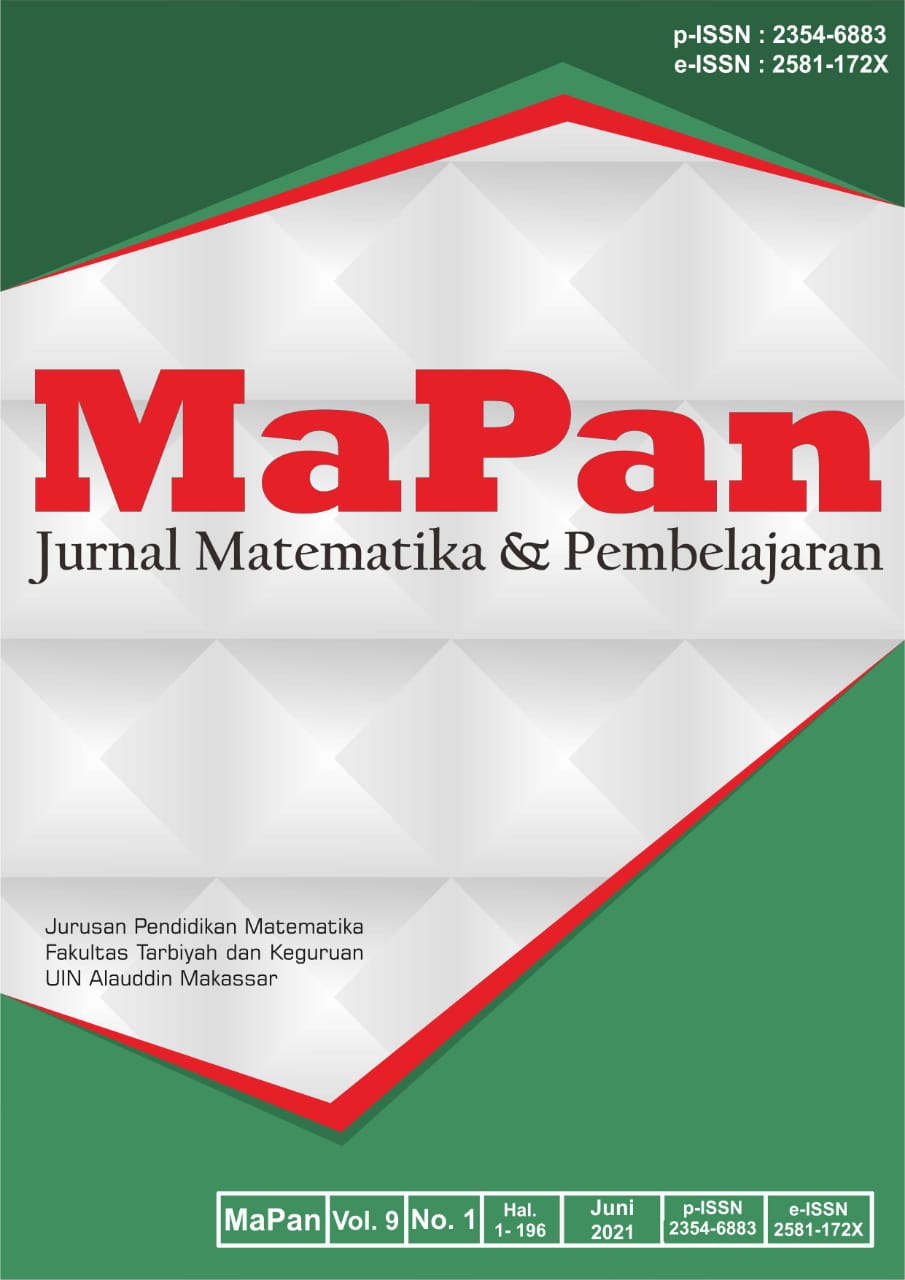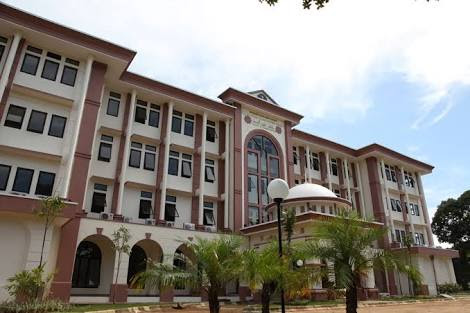MANIPULATIVE LEARNING MEDIA BASED ON STEM (SCIENCE, TECHNOLOGY, ENGINEERING, AND MATHEMATICS) TO IMPROVE STUDENT LEARNING OUTCOMES
Abstract
This study aimed to develop manipulative learning media based on STEM (Science, Technology, Engineering, and Mathematics) called Magic Hours on Clock and Corner material. Research and development model used by using the procedure of Analysis, Design, Development, Implementation, and Evaluation (ADDIE). The population of this study was all 4th grade students from elementary school in Kediri. Due to the Covid-19 Pandemic situation and study from home policy, manipulative media was tested on 13 fourth grade elementary school students in Kediri who came from the same village to reduce students' mobility from one place to another. Data collection techniques are collecting through expert validation, teacher questionnaires, student questionnaires, test, observation, and interviews. The instruments are test (description questions) and non-test instruments (material validation sheets, design validation sheets, practicality assessment sheets, questionnaire validation sheet, and questionnaires). The result shows that the learning media are valid, practical, and effective. Learning media have feasible criteria with an assessment score of 88.46% from media experts and 86.67% from material experts. In the practicality test, learning media obtained a percentage of 86.67% with practical criteria. The result of a one-sample t-test on student test scores indicates that the average mathematics score test is significantly more than Minimum Completeness Criteria.Downloads
References
Anggoro, R. P. (2019). The use of fractional manipulative media to increase the conceptual understanding of elementary school students. Indonesian Journal of Mathematics Education, 2(2), 75–80. https://doi.org/10.31002/ijome.v2i2.1825.
Arikunto, S. (2006). Prosedur penelitian: Suatu pendekatan praktik. Jakarta: Rineka Cipta.
Becker, K. & Park, K. (2011). Effect of integrative approaches among Science, Technology, Engineering, and Mathematics (STEM) subjects on students learning: A preliminary meta-analysis. Journal of STEM Education, 12(5 & 6), 23–37. https://doi.org/10.12691/education-2-10-4.
Binangun, H. H. & Hakim, A. R. (2016). Pengaruh penggunaan alat peraga jam sudut terhadap hasil belajar matematika. JKPM (Jurnal Kajian Pendidikan Matematika), 1(2), 204–214. http://dx.doi.org/10.30998/jkpm.v1i2.1188.
Burns, M. (2007). About teaching mathematics: A K-8 Resource (3th ed). Sausalito, CA: Math Solution Publication.
Cope, L. (2015). Math manipulatives: making the abstract tangible. Delta Journal of Education, 5(1), 10–19.
Frei, S. (2008). Teaching mathematics today. Huntington Beach, CA: Shell Education.
Gallant, D. J. (2010). Science, Technology, Engineering and Mathematics (STEM) education. Colombus, OH: McGraw-Hill.
Hidayah, I., Isnarto, Masrukan, & Asikin, M. (2020). Quality management of mathematics manipulative products to support students’ higher order thinking skills. International Journal of Instruction, 14(1), 537–554. http://dx.doi.org/10.29333/iji.2021.14132a.
Indarwati, Ima, & Diana. (2017). The effectiveness of manipulative scales media in children’s group B measurement concept ability at TK negeri Pembina Sragen. Indonesian Journal of Early Childhood Education Studies, 6(1), 48–53. https://doi.org/10.15294/ijeces.v6i1.15788.
Isnaniah & Imamuddin, M. (2020). Student’s understanding of mathematical concepts using manipulative learning media in elementary schools. Journal of Physics: Conference Series, 1471, 1-8. https://doi.org/10.1088/1742-6596/1471/1/012050.
Juma’atin. (2018). Pengembangan media pembelajaran berbentuk jam sudut untuk meningkatkan hasil belajar siswa materi pengukuran sudut mata pelajaran matematika kelas IV di MI Miftahul Huda Karangploso. Undergraduate Thesis. Universitas Islam Negeri Malik Ibrahim, Malang, Indonesia.
Karahan, E., Bilici, S. C., & Unal, A. (2015). Integration of media design process in Science, Technology, Engineering, and Mathematics (STEM) education. Eurasian Journal of Educational Research, 15(60), 221–240. Retrieved from https://dergipark.org.tr/en/download/article-file/59910.
Kelley, T. R & Knowles, J. G. (2016). A conceptual framework for integrated STEM education. International Journal of STEM Education, 3(11), 1–11. https://doi.org/10.1186/s40594-016-0046-z.
Larbi, E., & Mavis, O. (2016). The use of manipulatives in mathematics education. Journal of Education and Practice, 7(36), 53–61. Retrieved from https://www.iiste.org/journals/index.php/JEP/article/view/34636.
Latri, L., Nonci, J., & Juhari, A. (2019). The development of elementary school mathematics learning packaged assisted by manipulative media: supporting qualified and creative primary teacher candidate programs. Proceeding of 1st International Conference of Science and Technology in Elementary Education (ICSTEE). https://dx.doi.org/10.4108/eai.14-9-2019.2290052.
Mahmudah, R., Ahyan, S., & Rasidi, A. (2018). Pengembangan media pembelajaran matematika dengan menggunakan software lectora inspire pada materi perbandingan untuk siswa kelas VII SMP. Journal of Honai Math, 1(1), 47–55. https://doi.org/10.30862/jhm.v1i1.769.
Mulyatiningsih, E. (2012). Metode penelitian terapan bidang pendidikan. Bandung: Alfabeta.
Nieveen, N. (1999). Prototyping to reach product quality. In Design Approach and Tools in Education and Training (Akker, Jan.V.D., Branch, R.M., Gustafon, et al). Dordrecht: Kluwer Academic Publisher.
NRC. (2012). Framework for K-12 science education: practices, crosscutting concepts, and core ideas. Washington, DC: The National Academies of Science.
Packenham, P. S. M. & Westenskow, A. (2013). Effects of virtual manipulatives on student achievement and mathematics learning. International Journal of Virtual and Personal Learning Environments, 4(3), 35–50. https://doi.org /10.4018/jvple.2013070103.
Palupi, A. N. (2019). Use manipulative media as a stimulation of ability to understand the concept of early children's age. Early Childhood Research Journal, 2(1), 43–66. https://doi.org/10.23917/ecrj.v3i2.11414.
Putra, I. S. (2020). Improve student’s learning using media for understanding and interest in pytagorean theorem learning. Vygotsky, 2(2), 66–77.
Sanders, M. (2009). STEM, STEM education, STEM Mania. The Technology Teacher, 20–26. https://doi.org/10.30736/vj.v2i2.222.
Sugiyono. (2008). Metode penelitian kualitatif, kuantitatif dan R&D. Bandung: Alfabeta.
Susanti, L. Y., Hasanah, R., & Khirzin, M. H. (2018). Penerapan media pembelajaran kimia berbasis science technology, engineering, and mathematics (STEM) untuk meningkatkan hasil belajar siswa SMA/SMK pada materi reaksi redoks. JPS: Jurnal Pendidikan Sains, 6(2), 32–40. https://doi.org/10.26714/jps.6.2.2018.32-40.
Suwarman, I. R., Astuti, P. & Endah, N. E. (2015). “Balloon powered car” sebagai media pembelajaran IPA berbasis STEM (Science, Technology, Engineering, and Mathematics). Prosiding Simposium Nasional Inovasi dan Pembelajaran Sains 2015 (SNIPS 2015), pp. 373–376. Bandung.
Syam, A. P., Akib, I., & Syamsuddin, A. (2019). The application of cooperative learning model of Team Assisted Individualization (TAI) based manipulative media on topics “shape” of class VI elementary school of Tombolok Gowa. Daya Matematis: Jurnal Inovasi Pendidikan Matematika, 7(3), 317–327. https://doi.org/10.26858/jds.v7i3.11876.
Ulyani, O. & Qohar, A. (2020). Development of manipulative media to improve students' motivation and learning outcomes on the trigonometry topic. Proceeding of 4th International Conference on Mathematics and Science Education (ICoMSE), 2330 (1), 040035. https://doi.org/10.1063/5. 0043142.
Yensi, N. A. (2020). The method to solve problems about fraction by using the manipulative media. Proceedings of The International Conference on Educational Sciences and Teacher Profession (ICETeP 2020). https://dx. doi.org/10.2991/assehr.k.210227.057.
Copyright (c) 2021 Eka Sulistyawati, Diana Puspitasari, Zulinda Nur Saidah, Iffatur Rofiqoh

This work is licensed under a Creative Commons Attribution 4.0 International License.


